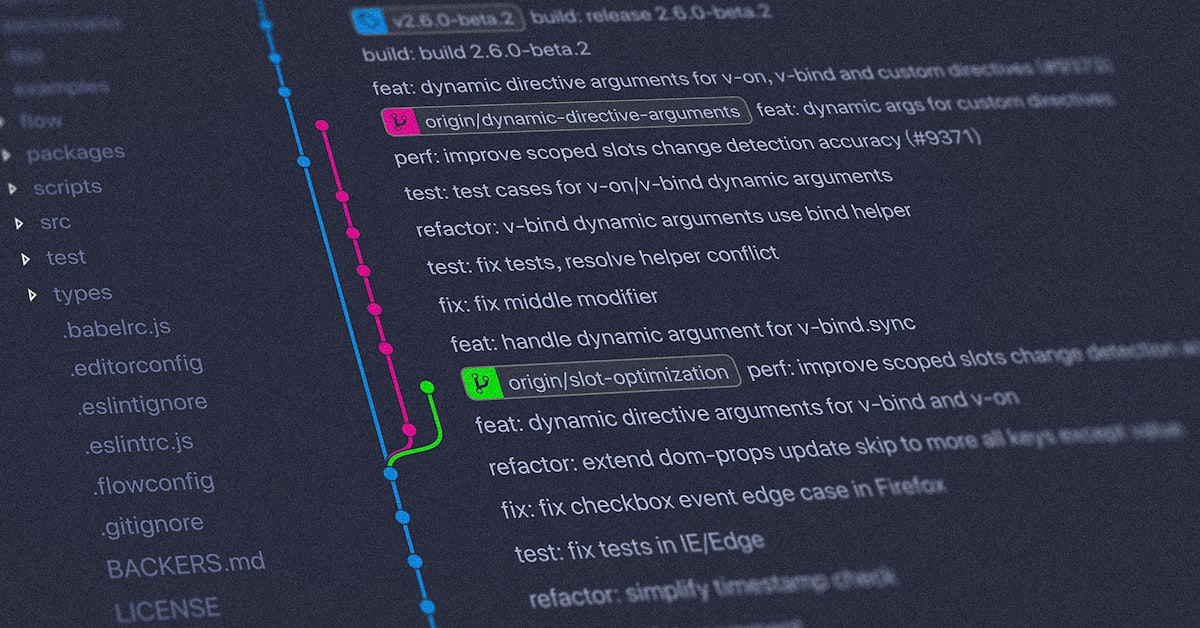· Sweady Team · Productivity · 7 min read
Why You Should Create a Slack Channel for Every Pull Request
Discover how dedicated Slack channels for each pull request can transform your team's collaboration, streamline code reviews, and accelerate your development workflow.

Why You Should Create a Slack Channel for Every Pull Request
In today’s fast-paced software development environment, effective collaboration is essential for maintaining quality while delivering features quickly. One practice that’s gaining traction among high-performing teams is creating dedicated Slack channels for each pull request. This seemingly simple change to your workflow can have profound effects on your team’s productivity, code quality, and overall collaboration.
The Problem with Traditional PR Communication
Before diving into the solution, let’s examine the common challenges teams face with traditional pull request communication:
1. Scattered Conversations
In a typical development workflow, discussions about a pull request happen across multiple platforms:
- Comments in GitHub/GitLab/Bitbucket
- General Slack channels
- Direct messages between team members
- Email threads
- In-person or virtual meetings
This fragmentation makes it difficult to track the complete context of a discussion and often leads to information silos.
2. Notification Overload
Developers are bombarded with notifications from various sources throughout the day. Important PR-related messages can easily get lost in busy general channels or buried under other notifications.
3. Limited Visibility
When discussions happen in direct messages or small group chats, valuable context and decisions remain hidden from the wider team. This reduces transparency and limits knowledge sharing.
4. Context Switching
Constantly jumping between different tools and communication channels creates cognitive overhead and reduces developer productivity.
5. Delayed Feedback
Without a dedicated space for PR discussions, feedback can be delayed as reviewers might not be aware of new changes or urgent questions.
The Dedicated PR Channel Solution
Creating a specific Slack channel for each pull request addresses these challenges by centralizing all PR-related communication in one place. Here’s how it works:
- A developer creates a new pull request
- A dedicated Slack channel is automatically created (e.g., #pr-123-feature-name)
- Relevant team members are invited to the channel
- All PR-related notifications, discussions, and updates happen in this channel
- When the PR is merged or closed, the channel can be archived
This approach transforms how teams collaborate on code reviews and brings numerous benefits to your development process.
Key Benefits of Dedicated PR Channels
1. Centralized Communication
With a dedicated channel, all discussions about a specific PR are in one place. This includes:
- Initial PR announcements
- CI/CD build notifications
- Review comments and feedback
- Questions and clarifications
- Design discussions
- Implementation decisions
This centralization eliminates the need to search across multiple platforms for information and ensures that everyone has access to the complete context.
2. Improved Visibility and Awareness
Dedicated channels make it easier for team members to stay aware of active PRs and their status. This increased visibility leads to:
- Faster reviews as reviewers are more aware of pending PRs
- Better prioritization of review tasks
- Reduced time PRs spend waiting for feedback
- Easier identification of PRs that need attention
3. Enhanced Collaboration
PR-specific channels create a focused space for collaboration, leading to:
- More thorough discussions about implementation details
- Better knowledge sharing across the team
- Easier onboarding of additional reviewers when needed
- Improved cross-functional collaboration (e.g., between developers, designers, and product managers)
4. Reduced Context Switching
By centralizing PR discussions in Slack, developers spend less time switching between different tools and platforms. This reduction in context switching helps maintain focus and improves productivity.
5. Persistent History
Slack channels provide a persistent history of all discussions related to a PR, which serves as valuable documentation for:
- Understanding why certain decisions were made
- Onboarding new team members
- Troubleshooting issues that arise later
- Learning from past experiences
6. Faster Resolution of Issues
When issues arise during review, dedicated channels facilitate faster resolution through:
- Real-time discussions about complex problems
- Quick clarification of requirements or implementation details
- Immediate notification of all stakeholders when changes are made
- Reduced back-and-forth cycles
Real-World Success Stories
Case Study: Airbnb
Airbnb implemented a system where each PR gets its own Slack channel. According to their engineering team, this approach reduced their average PR review time by 30% and significantly improved the quality of feedback provided by reviewers.
Case Study: Medium-Sized SaaS Company
A medium-sized SaaS company reported that after implementing dedicated PR channels, they saw:
- 25% reduction in time to merge PRs
- 40% increase in the number of comments per PR
- Significant improvement in developer satisfaction with the review process
- Better knowledge sharing across teams
How to Implement PR Channels in Your Team
1. Automated Channel Creation
The most efficient approach is to automate the creation of PR channels. This can be done through:
- GitHub/Slack integrations
- Custom bots using GitHub webhooks and Slack API
- Third-party tools designed for this purpose
Automation ensures consistency and reduces the overhead of manually creating channels.
2. Channel Naming Conventions
Establish clear naming conventions for PR channels to make them easily identifiable. Common patterns include:
#pr-[number]-[brief-description]#review-[repository]-[number]#pr-[team]-[feature]
Consistent naming makes it easier to find and manage channels.
3. Automatic Invitations
Configure your automation to invite the right people to each PR channel:
- The PR author
- Assigned reviewers
- Team leads or managers
- Other stakeholders based on the files changed
This ensures that everyone who needs to be involved is included from the start.
4. Notification Integration
Integrate relevant notifications into the PR channel:
- PR creation, updates, and comments
- CI/CD build results
- Deployment status
- Code quality metrics
- Security scan results
These integrations provide valuable context without requiring manual updates.
5. Channel Lifecycle Management
Establish policies for managing the lifecycle of PR channels:
- When to create channels (e.g., at PR creation or after initial review)
- When to archive channels (e.g., after merge, after deployment, or after a grace period)
- Whether to keep archived channels searchable for future reference
Good lifecycle management prevents channel proliferation while preserving valuable history.
Best Practices for PR Channels
1. Keep Discussions Focused
Encourage team members to keep discussions in PR channels focused on the specific changes being reviewed. This helps maintain clarity and prevents scope creep.
2. Use Threads for Detailed Discussions
For in-depth discussions about specific aspects of the PR, use Slack threads to keep the main channel clean and organized.
3. Summarize Key Decisions
After important discussions, summarize key decisions in the channel to ensure everyone has a clear understanding of what was decided.
4. Use Emoji Reactions
Establish a system of emoji reactions to indicate review status and reduce noise:
- 👀 - “I’m reviewing this”
- ✅ - “Approved”
- 🔄 - “Changes requested”
- 🚀 - “Ready to merge”
5. Pin Important Messages
Pin critical information like design documents, requirements, or key decisions to the channel for easy reference.
6. Encourage Cross-Functional Participation
Invite non-developers (designers, product managers, QA) to relevant PR channels to foster better cross-functional collaboration.
Overcoming Common Challenges
Challenge: Channel Proliferation
With many active PRs, teams might worry about having too many Slack channels.
Solution: Implement automatic archiving of channels when PRs are merged or closed, and use consistent naming conventions to make navigation easier.
Challenge: Notification Fatigue
More channels could mean more notifications for team members.
Solution: Encourage the use of Slack’s notification settings to customize alerts, and establish team norms about when immediate responses are expected.
Challenge: Duplicated Information
Some teams worry about duplicating information between GitHub and Slack.
Solution: Use integrations to automatically sync comments between platforms, or establish clear guidelines about which types of feedback belong in each system.
Challenge: Onboarding New Team Members
New team members might find it difficult to adapt to this workflow.
Solution: Create clear documentation about your PR channel process and include it in your onboarding materials.
Conclusion
Creating dedicated Slack channels for each pull request is a simple yet powerful change that can transform your team’s collaboration and code review process. By centralizing communication, improving visibility, and reducing context switching, this approach helps teams deliver higher quality code more efficiently.
While implementing this workflow requires some initial setup and potential cultural adjustments, the benefits in terms of productivity, code quality, and team satisfaction make it well worth the investment. As development teams continue to seek ways to collaborate more effectively, especially in remote and hybrid environments, PR-specific channels represent a valuable addition to the modern development toolkit.
Whether you’re a small startup or a large enterprise, consider implementing dedicated PR channels in your workflow and experience the difference they can make to your team’s productivity and collaboration.
 Sweady
Sweady
